Professional Footwear Industry Expertise
Dedicated to enhancing your footwear business with proven skills in production and stock management, ensuring high-quality service and efficiency.




Gallery
Showcasing my expertise in the footwear industry.






Professional Services
Offering expertise in footwear manufacturing to enhance your business operations and efficiency.


Production Management
Expertly oversee production processes to ensure timely and quality footwear manufacturing.
Stock Management
Optimize inventory levels and streamline stock processes for improved operational efficiency.
Production Management:
Effective production management is crucial for any manufacturing operation. It encompasses a range of vital processes, including stock management, launch scheduling for fabrication orders, and ongoing production monitoring. In today’s fast-paced environment, organizations must implement strategic methodologies to ensure efficiency and maintain competitive advantage.
Stock Management
Stock management forms the backbone of production management. It involves the meticulous tracking of inventory levels, ensuring that raw materials are available when needed and minimizing excess stock that may incur additional costs. Employing techniques such as just-in-time inventory can greatly enhance efficiency, reducing waste and storage costs while meeting production demands seamlessly.
Launch Scheduling for Fabrication Orders
The launch schedule for fabrication orders is another critical aspect. Proper planning at this stage can determine the project's success or failure. This process requires analyzing various factors such as labor availability, machine capacity, and lead time for materials. By developing a comprehensive schedule based on these elements, manufacturers can streamline production processes, prevent bottlenecks, and ultimately meet deadlines with higher reliability.
Production Monitoring
Monitoring production is essential to ensure that operations run smoothly. By implementing real-time monitoring systems, managers can track progress and detect any deviations from the planned schedule. This includes analyzing the cycle time of individual machines, quality control metrics, and labor performance. With continuous monitoring, teams can quickly identify issues such as breakdowns or inefficiencies, allowing for prompt corrective actions, thus reducing downtime and minimizing costs.
Calculation of Charges
Understanding costs is vital in production management. Accurate calculation of charges associated with production operations helps assess pricing strategies and profit margins effectively. By integrating cost analysis into the production process, companies can make informed decisions regarding scaling production, negotiating supplier agreements, and forecasting financial projections.
Measurement and Timing
Measurement and timing directly influence production efficiency. Key performance indicators (KPIs) must be established to quantify outputs, efficiency, and quality. Time and motion studies can aid in establishing realistic benchmarks for various production activities, ensuring that workflows are optimized for maximum output. Automation tools can assist with data collection and analysis, providing insights that can lead to enhanced productivity.
Machine Layout
The layout of machines on the production floor can significantly impact workflow efficiency. An efficient machine layout minimizes material handling, reduces movement waste, and creates a streamlined process from start to finish. Techniques such as the cellular layout or layout-by-product can lead to faster production times and improved workflow management. It’s necessary to consider flexibility in machine placement, allowing for adaptation to changing production needs or product lines.
Conclusion
In conclusion, effective production management is a complex yet essential facet of any manufacturing operation. By focusing on stock management, scheduling, monitoring, cost calculations, and embracing digitalization, businesses can optimize their workflows for enhanced productivity. Machine layout and job workflow balancing further contribute to operational efficiency, while desktop software development provides the tools necessary for managing these processes effectively. Addressing production challenges with strategic management techniques will ultimately enhance productivity and profitability.
The Role of Desktop Software Development
As production management becomes increasingly digitized, the role of desktop software developers becomes pivotal. Custom software solutions can be tailored to meet specific operational needs, from inventory tracking to production scheduling and data analysis. By developing user-friendly applications that streamline workflow and enhance data management, developers play a key role in driving efficiency across the entire production process.
Breakdown Analysis and Cost Price
Understanding breakdowns and their impact on overall cost pricing is integral to production management. Every downtime incurs costs that can affect profitability. Analyzing breakdown patterns helps identify underlying issues, whether they stem from machine wear, operator error, or inadequate maintenance. By addressing these root causes, firms can enhance productivity while also lowering operational costs.
Digitalization of Data
Embracing digitalization offers enormous benefits for production management. By converting traditional methods of data collection and reporting into digital formats, teams can enhance accuracy, speed, and accessibility of information. Implementing enterprise resource planning (ERP) systems or manufacturing execution systems (MES) allows real-time data integration, providing stakeholders with immediate access to essential metrics and enabling informed decision-making.
Job Workflow Balancing
Job workflow balancing is essential for optimizing labor and machine efficiency. By analyzing the tasks and time required for each production stage, managers can allocate resources effectively. This may involve redistributing tasks among employees or rearranging machine utilization to avoid overloading specific areas while others are underutilized. Balanced workflows lead to higher output and improved morale, as employees are not overwhelmed or left with idle time.
Shoe Industry Expert
Elevate your footwear business with my extensive production and management skills.
Contact Us


Get in touch to discuss how I can enhance your footwear business needs.
Exceptional service and expertise! They elevated our production processes remarkably in the footwear industry.
Alex T.

★★★★★
Shoe Industry Projects
Showcasing my expertise in footwear manufacturing and management.


Production Management
Efficiently overseeing footwear production processes.






Stock Management
Optimizing inventory for seamless operations.

استمتع بجودة وتنوع لا مثيل لهما.
جميع الحقوق محفوظة © 2025 SimplSofts


